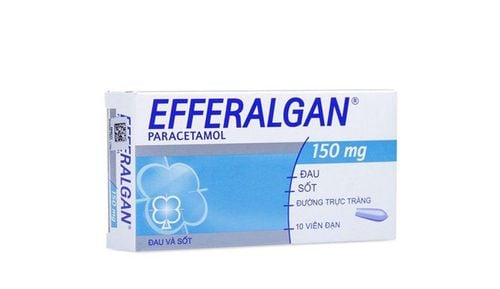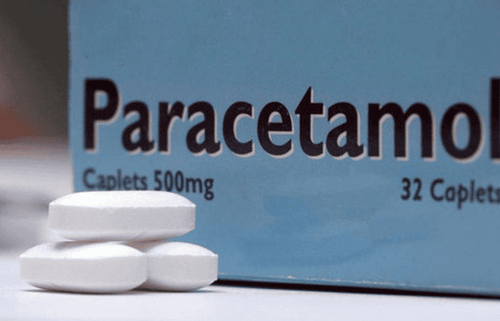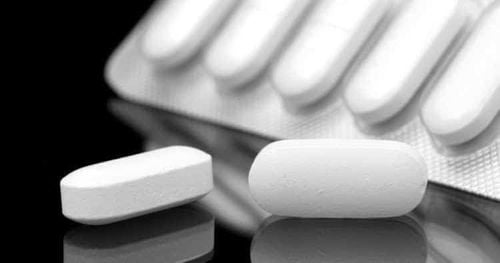This is an automatically translated article.
Acetylcysteine intravenous is indicated in the treatment of patients with paracetamol overdose, which has the potential to cause liver damage. Let's learn about the notes when using Acetylcysteine through the article below.
1. Uses
Acetylcysteine intravenous is indicated in the treatment of patients with paracetamol overdose with the potential to cause liver damage, specifically as follows:
Patients with a significant overdose of paracetamol, in which the drug is taken orally for a period of 1 hour or more; The patient has any suspicion of overdose symptoms when taking paracetamol, regardless of the concentration in the drug.
2. Dosage and usage
2.1. Dosage of Intravenous Acetylcysteine is best used with 5% Glucose infusion solution, in addition, 0.9% Sodium solution can be used in case 5% glucose is not suitable. Dosage of drugs used in detoxification Paracetamol is as follows:
Adults:
First dose: Intravenous injection 150mg/kg body weight drug as 20% solution in 5% glucose infusion. Infusion time 15 minutes; Second dose: Intravenous drip 50mg/kg body weight in 500ml 5% glucose solution for the next 4 hours; Third dose: Intravenous drip 100mg/kg body weight in 1 liter of 5% glucose over the next 16 hours. The total therapeutic dose is about 300mg/kg body weight over a 21-hour period. Continuation of drug therapy (Dosage and rate of administration as the third infusion) depends on the clinical condition of the patient. For obese patients, a ceiling weight of 110kg should be used to calculate the dose.
Children:
Dosage of acetylcysteine in children is similar to that of adults. However, the amount of fluid used should be appropriately calculated because fluid overload presents a potential hazard; Dosing syringes need to be used appropriately to ensure the correct dose of medication. 2.2. The way to use Acetylcysteine intravenously is prescribed by the treating doctor, the whole injection process is done by medical staff. The process of preparing the solution for infusion can be described as follows:
First dose: Prepare a 50 mg/mL drug solution by diluting each 10 mL ampoule of N - acetylcysteine (200 mg/mL concentration) with 30 mL of 5% glucose or sodium chloride 0.9%;; Second and third doses: Prepare a solution of 6.25mg/mL by diluting each 10mL ampoule of N-acetylcysteine with 310ml of 5% glucose solution or 0.9% sodium.
3. Side effects
Intravenous acetylcysteine can cause some of the following side effects:
Common: Vomiting, nausea, flushing, skin rash, fever, feeling of warmth, skin redness, chest tightness, difficulty breathing or difficulty swallowing; Less common: Bronchospasm, angioedema, respiratory failure, tachycardia, hypotension...; Other Adverse Reactions: Injection site reaction, cough, itching, chest pain or tightness, puffiness, malaise, sweating, increased temperature, vasodilation, eye pain, thrombocytopenia, anxiety, arthralgia, generalized convulsions, hypouricemia... Hypokalemia and electrocardiographic changes have been reported in patients with paracetamol poisoning regardless of treatment with N - acetylcysteine. Adverse reactions to treatment with intravenous acetylcysteine usually occur between 15 and 60 minutes after the infusion and in the majority of cases the adverse symptoms disappear when the infusion is stopped. In some cases, antihistamines and corticosteroids may be necessary to control adverse symptoms. The infusion rate in these cases should be reduced to a minimum of 100 mg/kg body weight per liter of solution, infusion time for 16 hours.
4. Note when using
There are no contraindications to the use of intravenous acetylcysteine in the detoxification of paracetamol overdose.
N - Intravenous acetylcysteine should be used within 24 hours of paracetamol overdose because of the risk of hepatotoxicity. Medications are indicated to help prevent or reduce the severity of liver damage. The effectiveness of the drug is highest when used about 8-10 hours after an overdose of paracetamol. Although the effectiveness may decrease 10-24 hours after an overdose of paracetamol, the drug should still be used for up to 24 hours because it is still effective.
Anaphylactoid reactions may occur during treatment with N - acetylcysteine, especially during the first therapeutic dose. Therefore, patients should be carefully monitored at this stage for signs of anaphylaxis, including vomiting, nausea, rash, skin flushing, urticaria,.... More serious reactions may be bronchospasm, angioedema, tachycardia, respiratory failure, hypotension...
Alterations in hemostatic parameters have been demonstrated with drug therapy Intravenous acetylcysteine as increasing prothrombin time...
Caution should be taken when treating children with the drug, patients need to limit fluids, patients weighing less than 40kg because of the risk of fluid overload, leading to hyponatremia , life-threatening convulsions.
Pregnant and lactating women: There are no studies to prove the safety of the drug for pregnant women, women who are breastfeeding. However, clinical experience indicates that the use of intravenous acetylcysteine for the treatment of paracetamol poisoning in pregnant women is effective. Therefore, the use of drugs in these subjects should be weighed against the benefits and risks.
Please dial HOTLINE for more information or register for an appointment HERE. Download MyVinmec app to make appointments faster and to manage your bookings easily.













